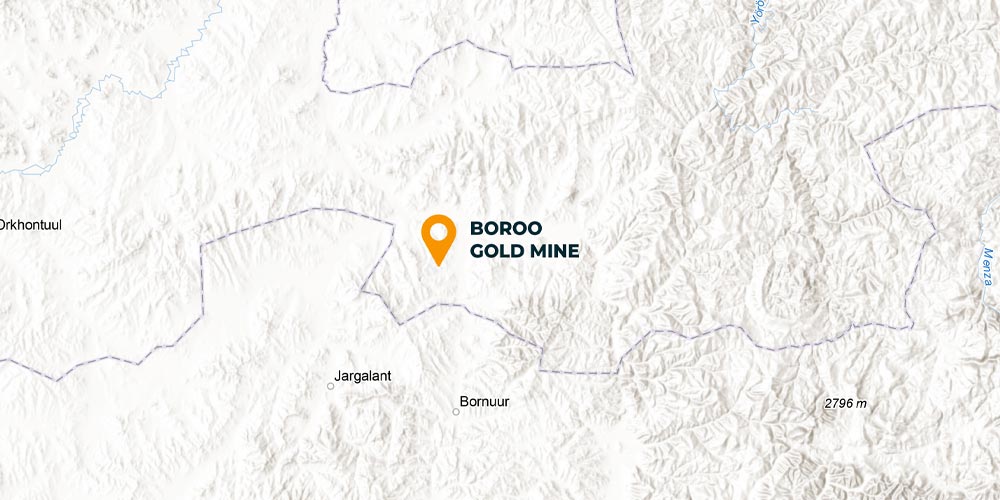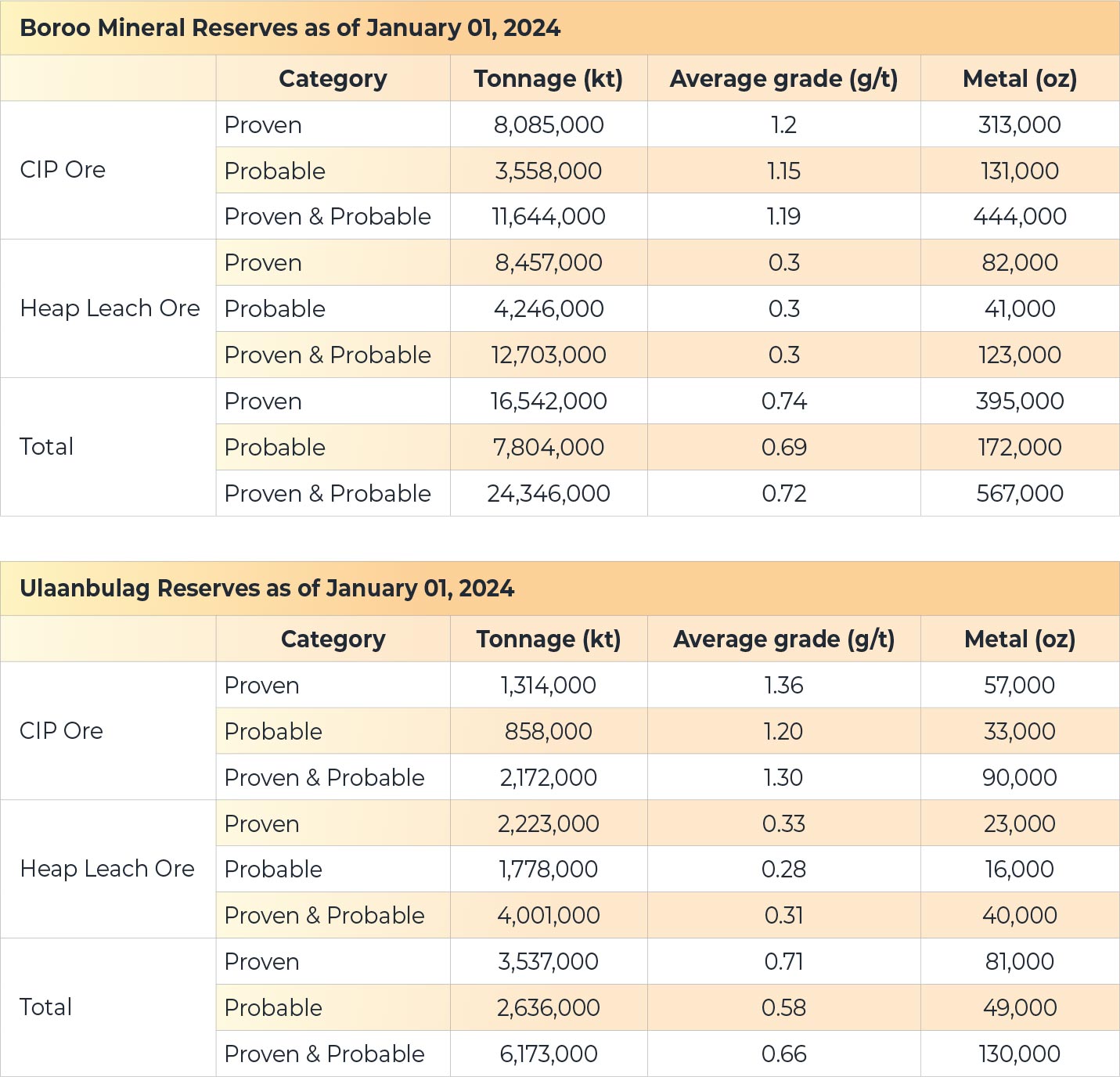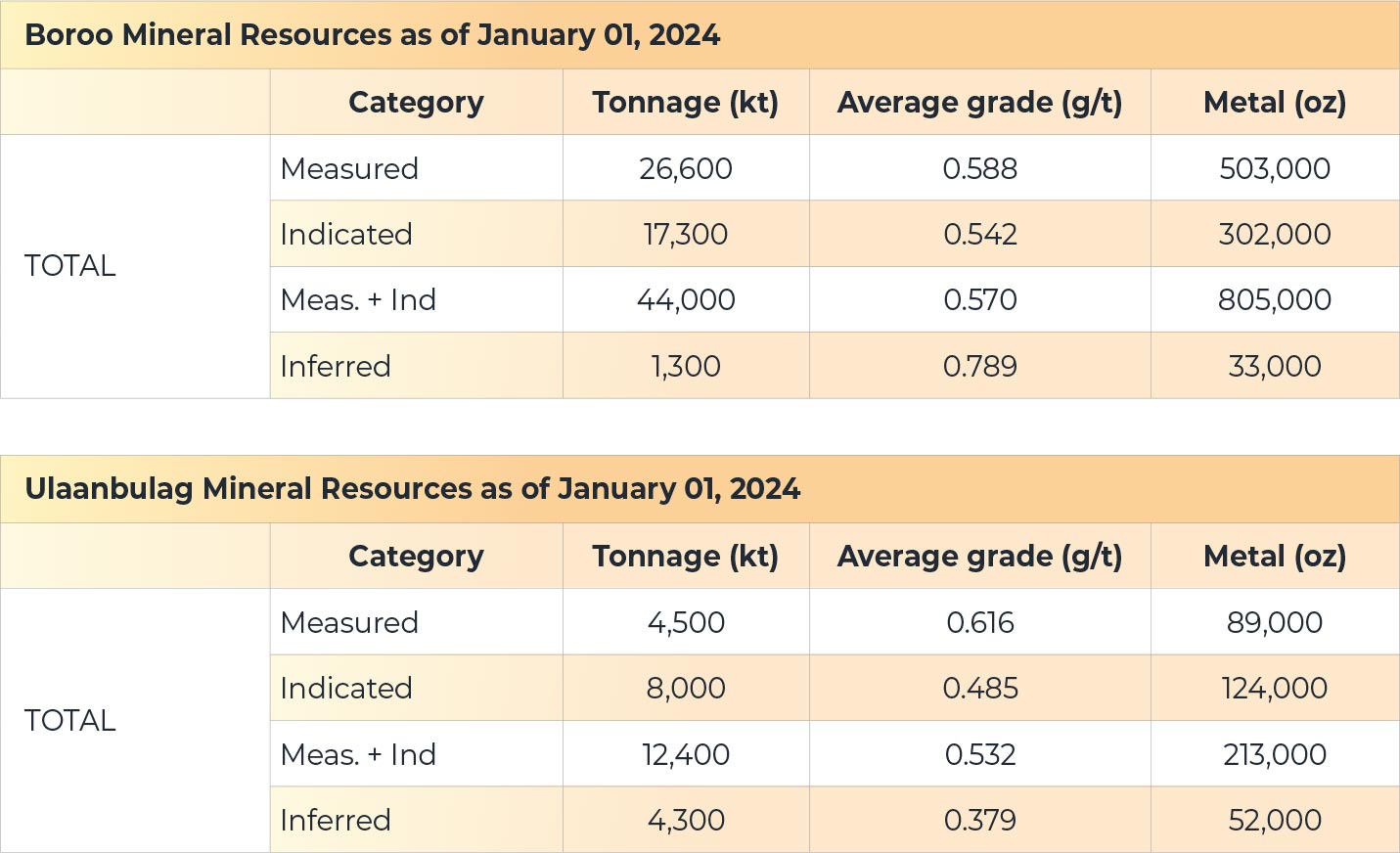Producing Mines
Boroo Gold Mine
Quick Facts
Ownership:
100%
Location:
Selenge Province, Mongolia
Status:
Operating
Operation:
Open-Pit Mine
Commodity:
Gold
The Boroo Gold Property is a highly-profitable gold mining operation fully owned by Boroo Gold LLC, a wholly owned subsidiary of Steppe Gold Ltd. The Property encompasses all hard-rock minerals and placer deposits within a number mining licenses, covering 6593.93 hectares.
Open pit mining commenced at Boroo Gold and Ulaanbulag in 2003 with 50k tpd mining fleet, 50,000 tpd mill, and CIL gold processing plant.
The Boroo Gold Property has a significant mineral reserve which will support operation through 2031. Operations at Boroo will target and annual average production of 54,000 ounces of gold.
The Property is equipped with the necessary infrastructure to sustain ongoing open-pit operations.
Boroo Gold is located 140 km to the northwest of the capital city of Ulaanbaatar, while Ulaanbulag is 19 km, southeast of Boroo Mine complex.
The geology of the Boroo area is dominated by the folded Haraa sediments, (PZhr), a fairly monotonous sequence of flysch sediments consisting of siltstone, sandstone and greywacke. These rocks are of regional extent and are interpreted to be of Lower Paleozoic age. Intrusive rocks of the Boroo Complex, of early Paleozoic age (~520 Ma to 450 Ma), have intruded the sediments. In the area, the Boroo complex is represented by leucocratic granite and granodiorite (PZgr), underlying the eastern part of the property.
Detailed drilling around the Boroo gold deposits shows that the contact between the intrusive and the sedimentary rocks is highly irregular, with sedimentary xenoliths floating in the intrusive rocks in the border zone. A significantly younger igneous event of probably late Paleozoic age is restricted to narrow vertical and shallow dipping dikes and fissures of granitic to dioritic composition.
The fault pattern, with the exception of the gold-bearing structures, is poorly known, but two crossing, high-angle, faults are indicated, one of them striking 70°, the other 340°, parallel to the Highway Fault mentioned above. The trace of the 340° fault, in its northern part, is directly underneath the Ikh Dashir Placer. A parallel fault is indicated on the satellite picture approximately 1.7 km to the east.
The bulk mineable gold mineralization at Boroo is hosted in a strongly quartz–sericite altered and sulfidized nearly flat lying zone controlled by the Boroo fault. The fault has been traced for a distance of 2.4 km and is thought to be a thrust fault that dips at an angle of 10° to the north-west and trending north-east (see Figure 7-2). It cuts across the intrusive contact between sediments and granitic rocks in the north but is entirely contained within the sediments in the south.
Two main types of mineralization have been noted:
- Gold-sulphide zones host the largest proportion of gold mineralization at Boroo. This type of mineralization is strongly altered quartz-sericite sulphidized zones that occur in thin, irregular veinlets, less often in breccia zones, and disseminated within the pervasive alteration. The intensity of sulphide mineralization depends on primary host rock and intensity of alteration being stronger in the granites than metasediments. The main sulphide minerals are pyrite, arsenopyrite and rarely chalcopyrite, tetrahedrite and galena. It appears that the gold in this mineralization is relatively fine grained.
- Gold-quartz vein type. The second major gold bearing facies is massive, white quartz veins in which gold is commonly coarse-grained. The thickness of quartz veins varies from a few centimetres to up to 3 m and appears as infill veins and veinlets in fractures within mostly metasediments. Veins contain small amount of sulphides and mostly coarse-grained visible gold. This type of mineralization from a volume perspective is subordinate, however, can carry very high gold values of up to several hundred grams per tonne.
Notes
1. Boroo and Ulaanbulag Mineral Resources are as of January 1, 2024, based on the CIM Definition Standards (2014).
2. Mineral Resources that are not Mineral Reserves have no demonstrated economic viability.
3. Reporting cut-off grade for Boroo and Ulaanbulag Mineral Resources is 0.1 g/t Au (include both heap leach and milling ore).
4. The Boroo and Ulaanbulag’s mineral resources has been depleted for mining up to the mining (without backfilling) as of January 1, 2024.
5. The Mineral Resources are stated as in situ dry tonnes. All figures are in metric tonnes.
6. Figures have been rounded to the appropriate level of precision for the reporting of Mineral Resources.
7. Due to rounding, some columns or rows may not compute exactly as shown.
Processing at Boroo Mine site has CIP plant and heap leaching (HL) operation. Established in 1997, Boroo Gold LLC is a leading gold producer in Mongolia with over 50,000 tons per day mining fleet, 5,000 tons per day mill and carbon-in-leach circuit gold processing plant, 3,000,000 tons per annum heap leach and carbon-in-columns plant, with a workforce of over 500 people.
Boroо Gold mine site is connected to the central power supply, and the CIP plant has access to electricity rather than a diesel generator, so diesel fuel consumption is low.


